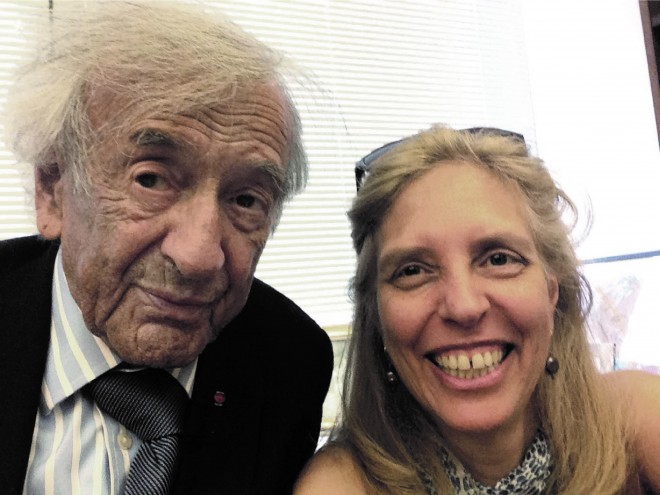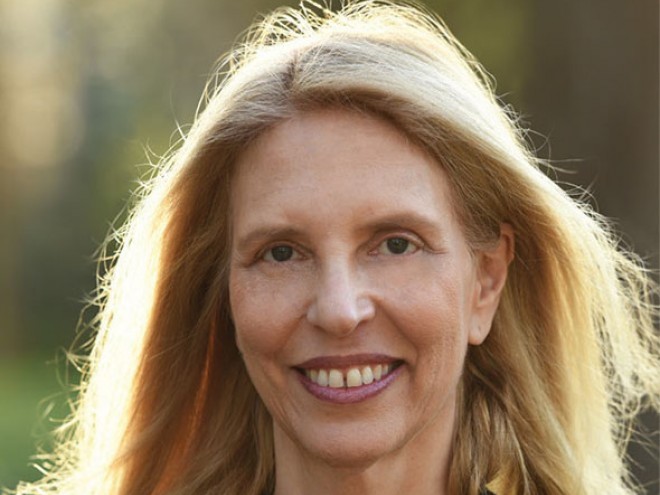
When I left the synagogue after Elie’s funeral on July 3, 2016, I wandered out onto 5th Avenue in New York, thinking about the hole his death left in my life. It was hot, and I longed for the coolness of Central Park, just a stone’s throw away — but the park was closed. A small bomb in a paper bag had exploded, injuring a young man and police had roped off the entrances. So I joined the masses of jostling people on the sidewalk, trying to process that Elie was gone. It had been a modest, private funeral, without too much ado, with comments by his cantor and friend Joseph Malovany, Elie’s son Elisha, and the man sitting in the row in front of me, broadcaster Ted Koppel. Their stories about Elie gave me something else to think about. They were humanizing and enlightening.
I decided that I would start collecting stories about Elie and his legacy for Moment, which he cofounded and where I now serve as editor-in-chief. We did, publishing “The Many Legacies of Elie Wiesel” in our September 2016 issue. Then came the book. At first it was going to be an e‑book, but it quickly grew into a print book, which took more than two years to produce. An accessible and visual presentation of his life and work seemed necessary. I hadn’t planned on including many photos at the start, but once archival photo research commenced, I found that Elie’s face, in particular his expressions, were part of the story as well.
The book was released in April, but I now realize that it isn’t really finished. Every time I speak about the book, I meet more people whose thoughts and experiences belong in the book.
The book was released in April, but I now realize that it isn’t really finished. Every time I speak about the book, I meet more people whose thoughts and experiences belong in the book. After my talk at the Skirball Center in Los Angeles, I met a man who was Elie’s bunkmate at Auschwitz. He had suffered a stroke and didn’t speak much, but his children told me their father’s story and later sent me photographs. After a talk at the University of Pennsylvania in Philadelphia, I spoke with a reporter and literary critic who had been at Elie’s apartment on November 4, 1995 — the day that Israeli Prime Minister Yitzhak Rabin was assassinated. He was there to interview Elie about his latest memoir, he told me, but instead sat by as person after person, including world leaders, called to discuss the tragedy with Elie. Elie conversed with the callers in English, French, Hebrew, and Yiddish; the reporter was struck by the nuance with which he fielded calls from so many from disparate political, cultural, and religious backgrounds — and gave them comfort. I have spoken with members of a family that played an invaluable role in helping Elie come and establish himself in the United States I have talked with people who never met him, like singer and songwriter Regina Spektor, who were inspired by his work.
Not all stories are positive. Like anyone, Elie had his detractors, and I meet people who were angry with him for various professional and personal reasons, and I listen to them too. Their experience wasn’t my experience, but it is a fundamental part of Moment’s ethos to show respect for, and provide a platform for, different views.
In fact, I have met so many people with inspirational stories and thoughts about Elie’s life and legacy that I have enough material for a second edition of the book. Perhaps someday I will return to writing about and gathering more stories about Elie and his many legacies.
While he was alive, Elie expanded my universe by being an encouraging, supportive mentor and friend. As it turns out, he is still expanding my universe.
Nadine Epstein is an award-winning journalist and editor-in-chief of Moment Magazine. She is the founder of the Role Model Project, created in memory of Justice Ginsburg to help young people identify and select role models. Epstein lives in Washington, DC.



